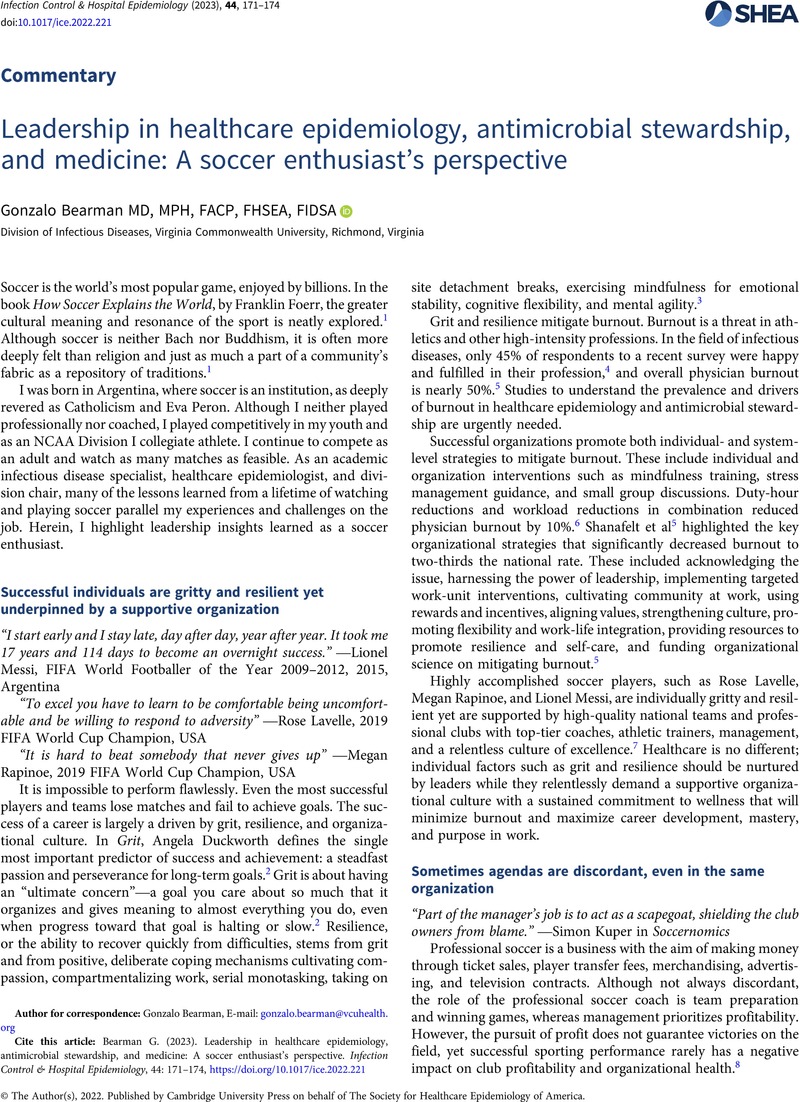Crossref Citations
This article has been cited by the following publications. This list is generated based on data provided by Crossref.
Birnbaum, David
2023.
Caution on mandatory public reporting.
Infection Control & Hospital Epidemiology,
Vol. 44,
Issue. 6,
p.
1037.
Schwanz, Thomas
2023.
Klimawandel geht uns alle an – und warum uns Fußball dabei helfen kann.
Krankenhaushygiene up2date,
Vol. 18,
Issue. 04,
p.
331.




